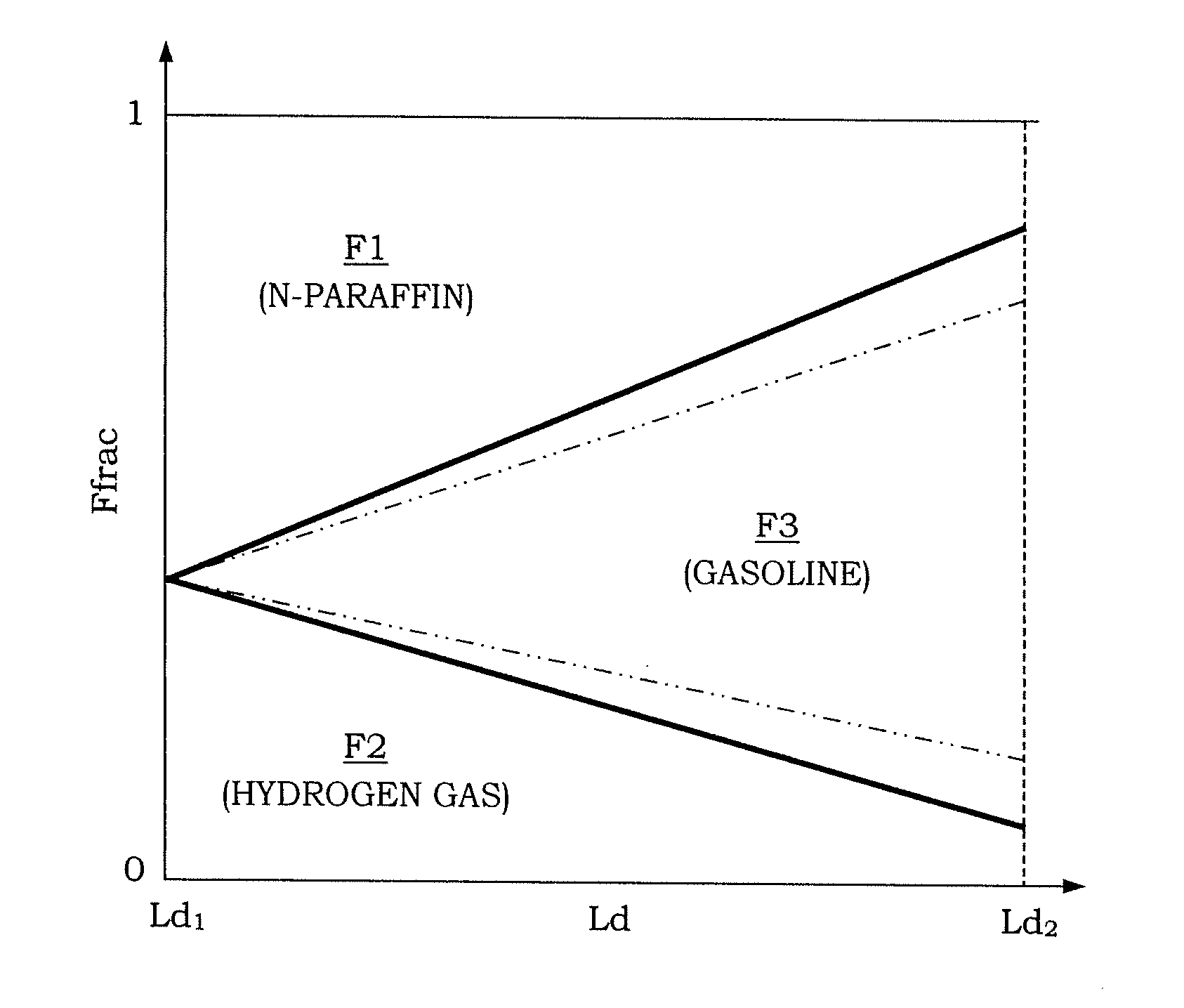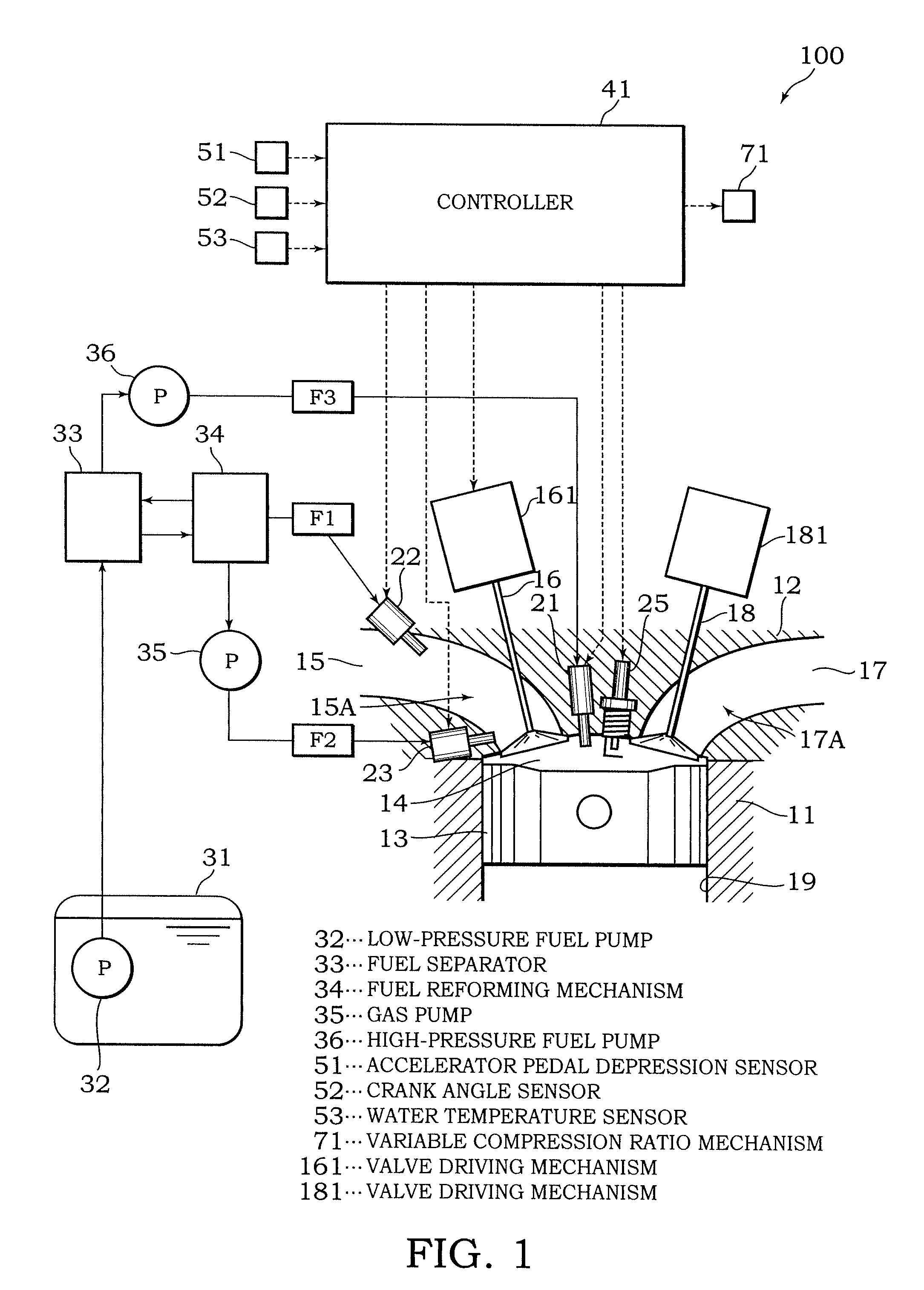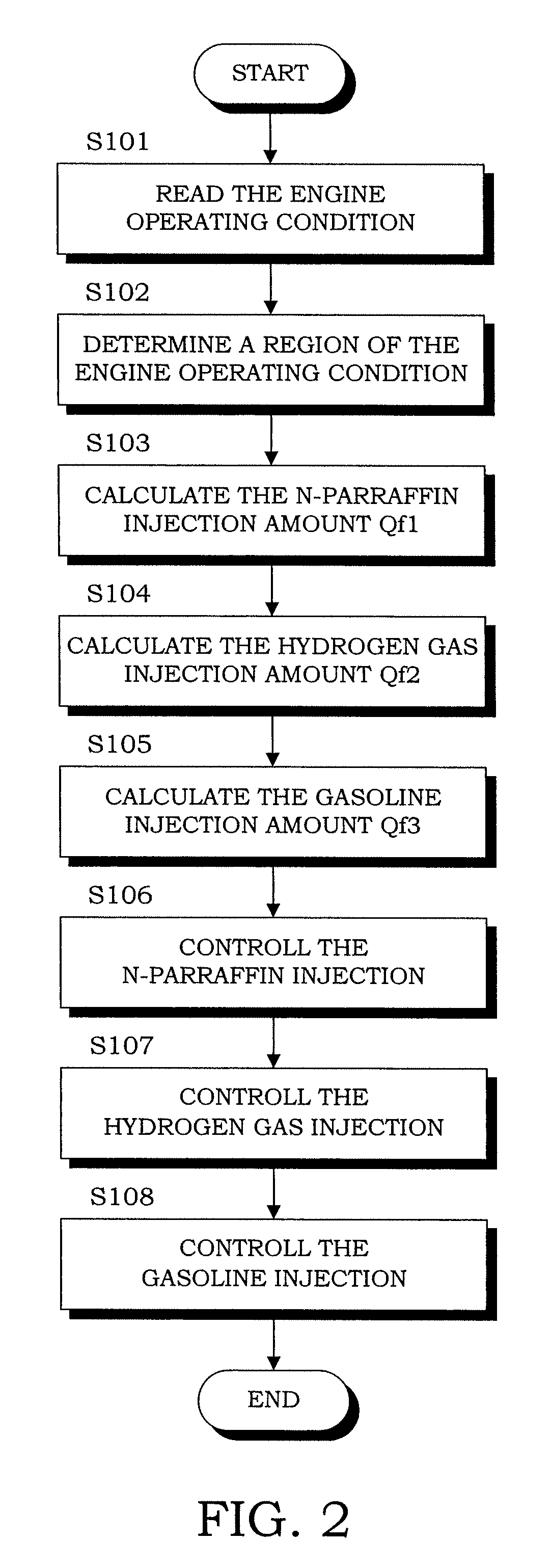Internal combustion engine
a combustion engine and combustion chamber technology, applied in the direction of electrical control, process and machine control, instruments, etc., can solve the problems of increasing the amount of discharged unburned fuel, inevitably generated nitrogen oxides (nox), limited etc., to achieve high temperature combustion, reduce emissions, and reduce the leanness of hydrogen-air mixtur
- Summary
- Abstract
- Description
- Claims
- Application Information
AI Technical Summary
Benefits of technology
Problems solved by technology
Method used
Image
Examples
first embodiment
[0029]Referring to FIG. 1-FIG. 6, this invention will be described.
[0030]Referring to FIG. 1, an internal combustion engine 100 for a vehicle comprises a cylinder block 11, and a cylinder head 12 disposed on an upper side of the cylinder block 11.
[0031]A cylinder 19 housing a piston 13 is formed in the cylinder block 11. A combustion chamber 14 is formed by a wall surface of the cylinder 19, a crown surface of the piston 13, and a lower surface of the cylinder head 12. When an air-fuel mixture is burned in the combustion chamber 14, the piston 13 receives combustion pressure and reciprocates through the interior of the cylinder 19.
[0032]An intake port 15A that communicates with an intake passage 15 and opens onto one side of the combustion chamber 14 is formed in the cylinder head 12. An intake valve 16 is provided in the intake port 15A. When the intake valve 16 is open, air from which dust particles and the like have been removed by an air cleaner is aspirated into the combustion ...
second embodiment
[0069]Referring to FIG. 9-FIG. 14, this invention will be described.
[0070]The internal combustion engine 100 according to this embodiment differs from the first embodiment in the constitutions of the combustion chamber, fuel system, and the content of control thereof. Other constitutions of the internal combustion engine 100 are identical to their counterparts in the first embodiment.
[0071]Referring to FIG. 9, the internal combustion engine 100 comprises a main combustion chamber 141 defined by the wall surface of the cylinder 19, the cylinder head 12 and the piston 13, and a fixed-volume auxiliary combustion chamber 142 separated from the main combustion chamber 141 and connected thereto via injection holes 142A. The auxiliary combustion chamber 142 forms a flame torch that spouts out the main combustion chamber 141 through each of the injection holes 142A when an air-fuel mixture in the auxiliary combustion chamber 142 is burned.
[0072]The internal combustion engine 100 comprises t...
third embodiment
[0100]Referring to FIG. 15, FIG. 16, FIGS. 17A and 17B, and FIGS. 18A and 18B, this invention will be described.
[0101]The internal combustion engine 100 according to this embodiment is substantially identical to that of the first embodiment, but differs therefrom in that the controller 41 performs fuel injection control such that combustion in the low load / low rotation speed region A is further stabilized. More specifically, the injection amounts of the respective fuels are corrected in accordance with the combustion condition of the air-fuel mixture, and the following description will center on this difference.
[0102]Referring to FIG. 15, the internal combustion engine 100 comprises a cylinder pressure sensor 54 and a knocking level sensor 55.
[0103]The cylinder pressure sensor 54 is provided in the cylinder block 11 to detect the internal pressure of the combustion chamber 14. A detection signal from the cylinder pressure sensor 54 is input into the controller 41.
[0104]The knocking ...
PUM
 Login to View More
Login to View More Abstract
Description
Claims
Application Information
 Login to View More
Login to View More - R&D
- Intellectual Property
- Life Sciences
- Materials
- Tech Scout
- Unparalleled Data Quality
- Higher Quality Content
- 60% Fewer Hallucinations
Browse by: Latest US Patents, China's latest patents, Technical Efficacy Thesaurus, Application Domain, Technology Topic, Popular Technical Reports.
© 2025 PatSnap. All rights reserved.Legal|Privacy policy|Modern Slavery Act Transparency Statement|Sitemap|About US| Contact US: help@patsnap.com



